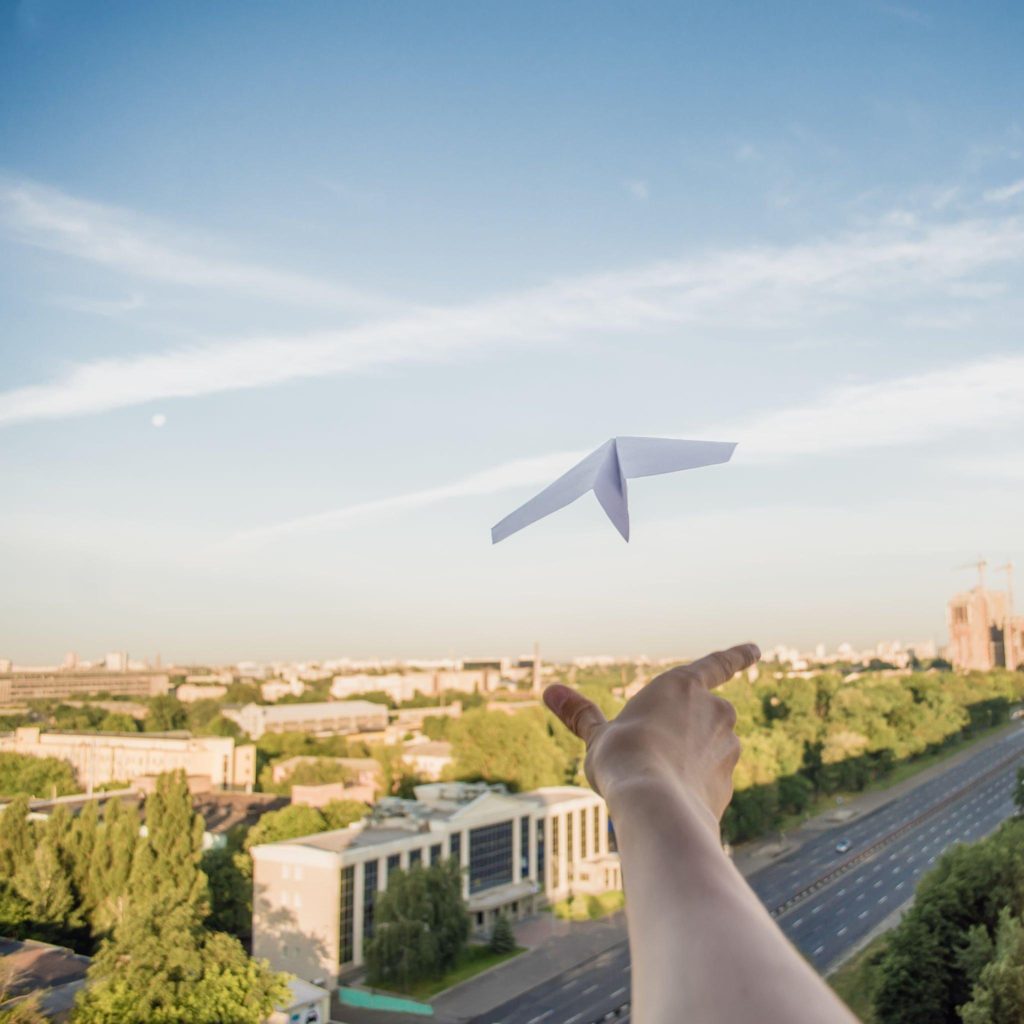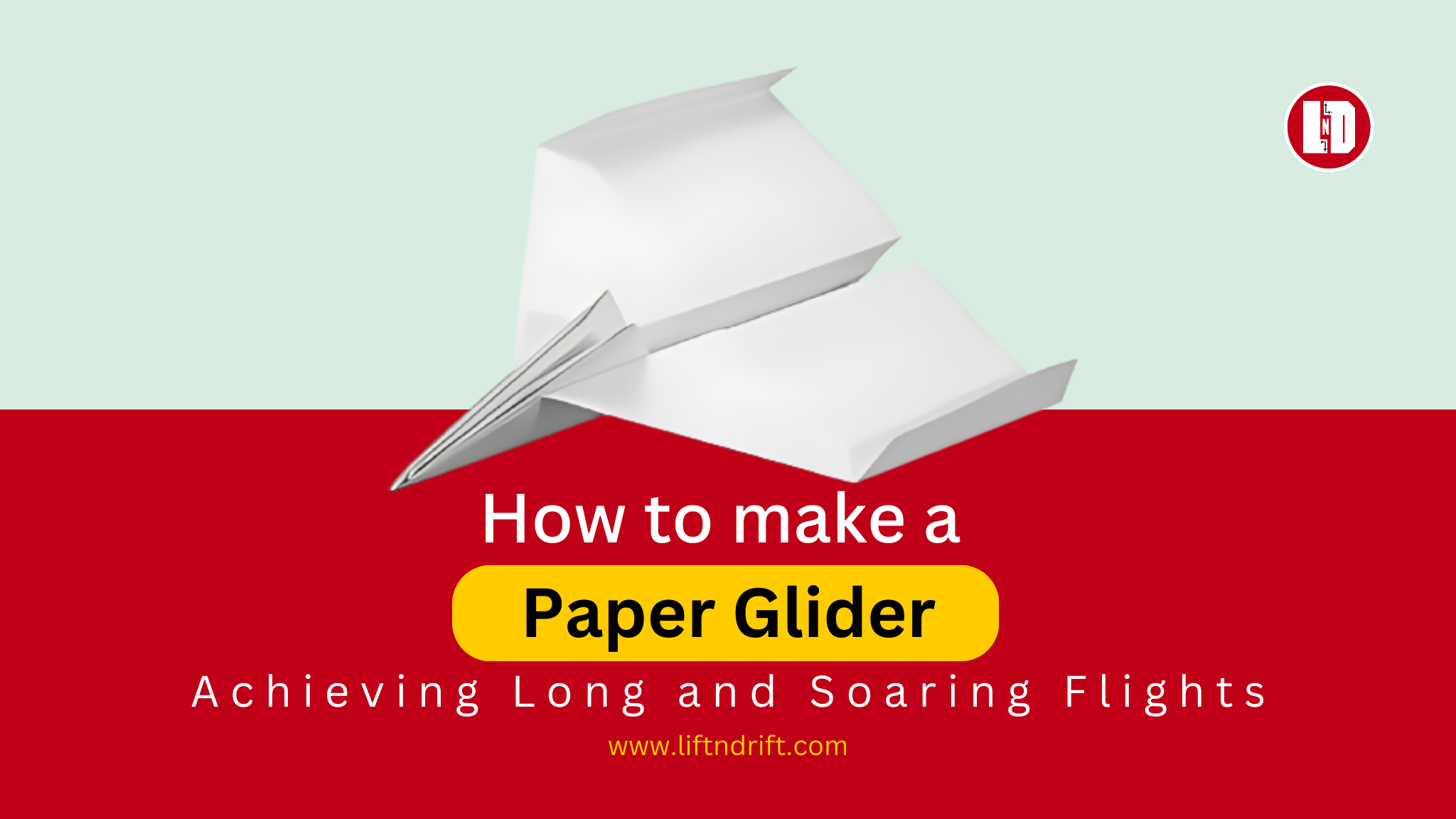Are you ready to embark on an exciting journey through the world of paper airplanes? Making a paper glider that can achieve long and soaring flights is an art that combines creativity, precision, and a touch of aerodynamic science. In this comprehensive guide, we will take you step by step through the process of creating your very own paper glider. Get ready to unleash your inner aviator and experience the thrill of seeing your creation soar through the air!

Table of Contents
| 1. Introduction |
| 2. Understanding the Flight Science |
| 3. Choosing the Right Paper |
| 4. Basic Paper Glider Design |
| 5. Advanced Paper Glider Designs |
| 6. Step-by-Step Instructions |
| 7. Tips and Tricks for Better Performance |
| 8. Frequently Asked Questions |
Introduction
Paper airplanes have fascinated people of all ages for generations. They offer a perfect blend of simplicity and creativity, allowing anyone to experience the joy of flight using nothing more than a sheet of paper. While there are countless designs to choose from, the art of making a paper glider stands out as one of the most captivating and rewarding experiences. So, let’s dive in and discover the secrets behind creating a paper glider that can soar through the skies!
Understanding the Flight Science
To make a paper glider that excels in long and soaring flights, it’s essential to grasp the basic principles of flight. Lift, drag, thrust, and gravity are the four forces that come into play when an aircraft takes to the air. By manipulating these forces, we can design a paper glider that achieves optimal performance.
For a deeper understanding of the flight science behind paper airplanes, check on our website.
Choosing the Right Paper
Selecting the right paper is crucial for the success of your paper glider. You’ll want a lightweight yet sturdy paper that can hold its shape and withstand the forces of flight. Experiment with different types of paper, such as printer paper, origami paper, or lightweight cardstock, to find the perfect balance between weight and durability.
Basic Paper Glider Design
Before diving into more complex designs, it’s essential to master the basics. The classic dart paper airplane is an excellent starting point. Its simple design allows for easy folding and launching. However, if you’re looking for more advanced designs, the Internet is teeming with incredible options.
Check out our collection of basic paper airplane designs on our website. These designs will help you get a feel for the different folds and techniques involved in constructing a paper glider.
Advanced Paper Glider Designs
Once you’ve mastered the fundamentals, it’s time to take your paper glider skills to the next level. Explore the vast array of advanced designs available online, each with its unique characteristics and flight patterns. From sleek, streamlined models to intricate folded patterns, there’s a design to suit every aspiring aviator.
Visit our website to discover some of the best paper airplane designs that can achieve remarkable distances and speeds.
Step-by-Step Instructions
Now, let’s dive into the exciting process of creating your paper glider. Follow these step-by-step instructions, and you’ll soon have a masterpiece ready to take flight.
Materials Needed:
- A sheet of paper
- A flat surface to work on
- Start with a rectangular piece of paper. If your paper is not already rectangular, you can easily trim it to the desired shape.
- Fold the paper in half lengthwise, crease well, and unfold.
- Fold the top edges down to meet at the center crease, forming a triangle shape.
- Fold the newly formed triangle in half, bringing the pointy end toward you.
- Fold the wings down by bringing the top edge of the paper to meet the bottom edge.
- Make sure the wings are symmetrical, and adjust as necessary.
- Fold the back of the glider up slightly to create the tail wing.
- Adjust the tail wing to achieve the desired stability during flight.
- Give your glider a gentle toss, and watch it soar through the air!
For visual instructions and additional paper glider templates, visit our website’s section on how to make a paper airplane that flies far.
Tips and Tricks for Better Performance
Creating a paper glider is not just about following instructions; it also involves experimentation and fine-tuning. Here are some tips and tricks to enhance the performance of your paper glider:
- Weight Distribution: Adjust the weight distribution by adding paper clips or folding the nose slightly to achieve optimal balance.
- Launch Technique: Experiment with different launch angles and throwing techniques to find the one that gives your glider maximum lift and distance.
- Aerodynamic Modifications: Try making small modifications to the wings, tail, or body shape to improve stability and reduce drag.
- Weather Conditions: Take advantage of outdoor conditions such as wind to enhance the flight performance of your glider.
Remember, practice makes perfect. Don’t be discouraged if your first attempts don’t result in a perfect flight. Keep experimenting and refining your technique until you achieve the desired results.
Frequently Asked Questions
Making a paper airplane involves a series of folds and creases to transform a flat sheet of paper into a flying creation. Follow the step-by-step instructions provided in this guide, and you’ll be able to create your own paper glider in no time.
The “best” paper airplane design can vary depending on personal preferences and flight goals. However, some popular designs known for their distance and stability include the classic dart, the Nakamura Lock, and the Zazoom.
Absolutely! Paper airplanes are an excellent activity for children as they promote creativity, hand-eye coordination, and an understanding of basic aerodynamics. Ensure adult supervision for younger children when using scissors or other sharp tools.
Yes! Feel free to experiment with different folds, modifications, and decorations to personalize your paper glider. Just remember to maintain a balance between aesthetics and flight performance.
Achieving long flights with a paper glider involves a combination of factors such as design, weight distribution, and launch technique. Refer to the step-by-step instructions and tips provided in this guide for guidance on creating a paper glider that can fly impressive distances.
Visit our website’s paper airplanes section to explore a wide range of designs, templates, and resources that will fuel your passion for paper aviation.
Congratulations on completing this ultimate guide on making a paper glider that achieves long and soaring flights. By combining creativity, precision, and a bit of flight science, you have unlocked the potential to create paper airplanes that defy expectations. Remember to experiment, practice, and most importantly, have fun with your paper gliders. Let your imagination soar as you embark on countless flights of discovery!
For more paper plane design, flight tips, and inspiration, visit Liftndrift, where we celebrate the art and science of paper aviation.

